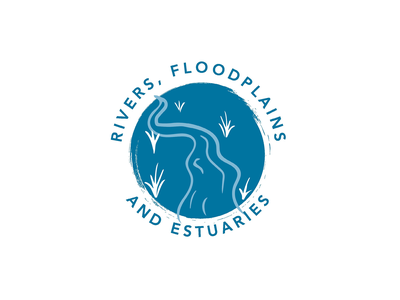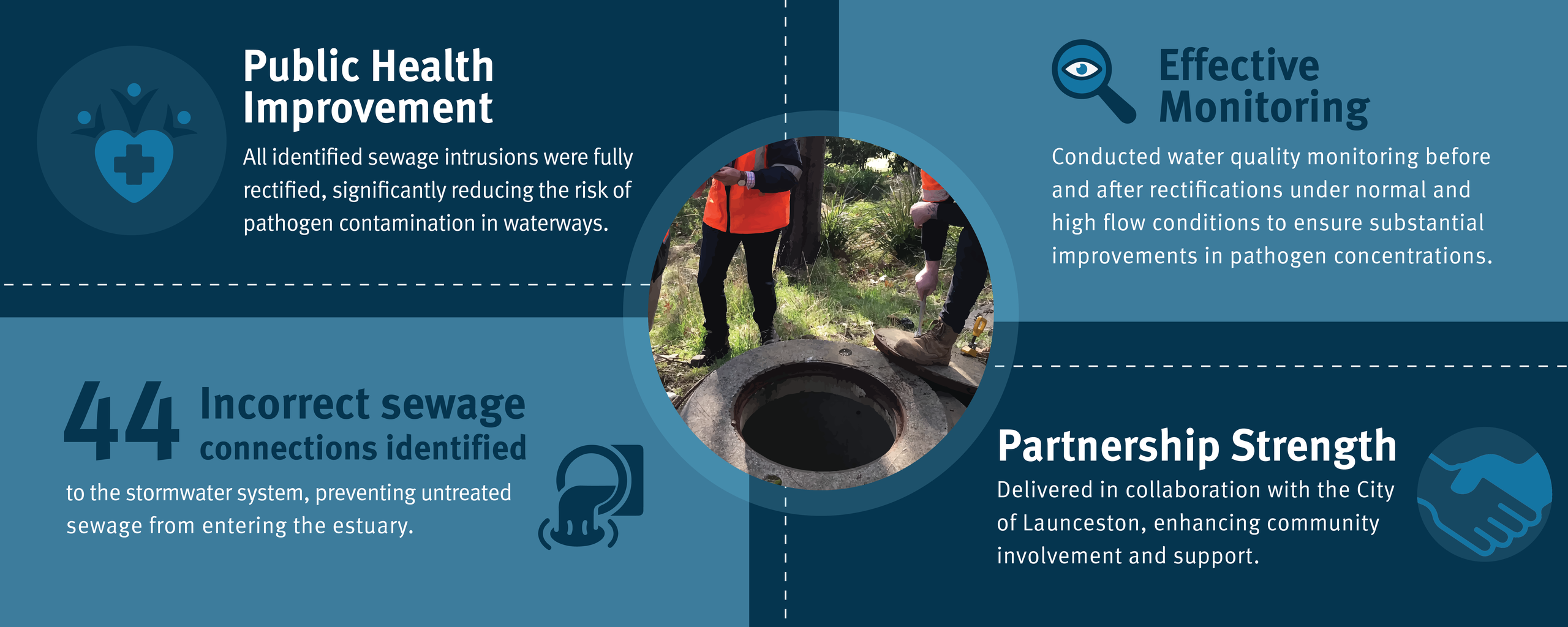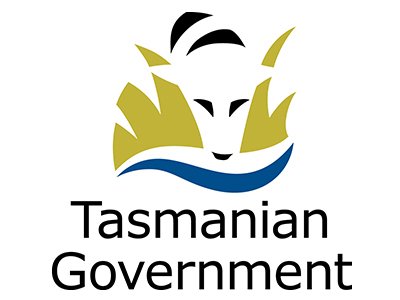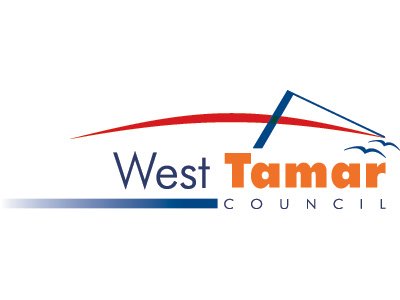Sewage Intrusion Program
Targeting urban pollution, this program collaborates with local partners to reduce pathogens in our waterways, enhancing water quality and community health.
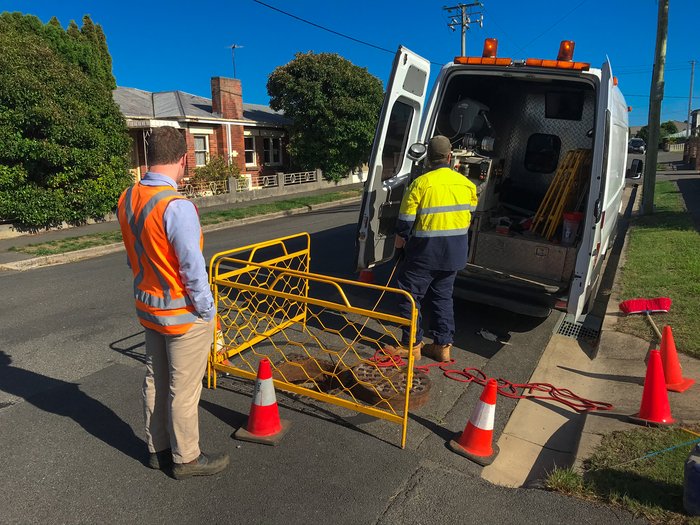
Pipes in the Greater Launceston area were inspected using CCTV.
Focus
Focus
In collaboration with the City of Launceston, the Stormwater Intrusion Program has made significant strides in safeguarding the kanamaluka / Tamar Estuary. Over two years, the team diligently examined Launceston's separate stormwater system, identifying and correcting 44 cross-connections where sewage was mistakenly entering stormwater pipes. This is when the sewage from a property has been incorrectly connected to the stormwater system, which flows directly into the estuary without treatment. These fixes now redirect approximately 13.2 megalitres of untreated sewage—equivalent to 5.3 Olympic-sized swimming pools—to treatment facilities each year, instead of flowing untreated into the kanamaluka / Tamar estuary.
This successful initiative not only protects the estuary but also enhances the quality of water for recreational use, significantly reducing pathogen levels. Completed in June 2021, this program stands as a testament to effective partnership across the City of Launceston, West Tamar, and Meander Valley councils, marking a lasting benefit to our community and natural resources.
Achievements
- - - - - - - - - - - - - - - - - - -
Quick Q&A
Quick Q&A
The health of the kanamaluka / Tamar estuary is influenced by Launceston's combined sewerage and stormwater system, inability to flush sediment due to marine tides meeting freshwater inflows, agricultural practices in the catchment, historical industrial practices, outflows from sewage treatment plants throughout the estuary, floods, and man-made changes to the flow and channel of the estuary.
Sediment input from the greater catchment area, into the river systems has contributed to the sedimentation of the kanamaluka / Tamar estuary. Surface runoff into the rivers includes nutrients and heavy metals. A legacy of historic mining in the upper catchment has also impacted the overall condition of the river systems and contributed to contaminants in the estuary. Improving the water quality in the TEER catchment will assist in the long-term sustainable management of this resource and the ecosystem health of the estuary.
There are many ways landholders can improve water quality in the catchments, especially graziers and dairy farmers. NRM techniques include keeping waterways clean and clear from contamination, using recommended sprays and additives, fencing off waterways and bushland, planting shelter belts, and introducing water and energy saving strategies and erosion control.
Partners
This project is funded through the kanamaluka / Tamar Estuary River Health Action Plan, an initiative of the Launceston City Deal. ‘Working together for a healthy estuary'.
Partners
This project is funded through the kanamaluka / Tamar Estuary River Health Action Plan, an initiative of the Launceston City Deal. ‘Working together for a healthy estuary'.
